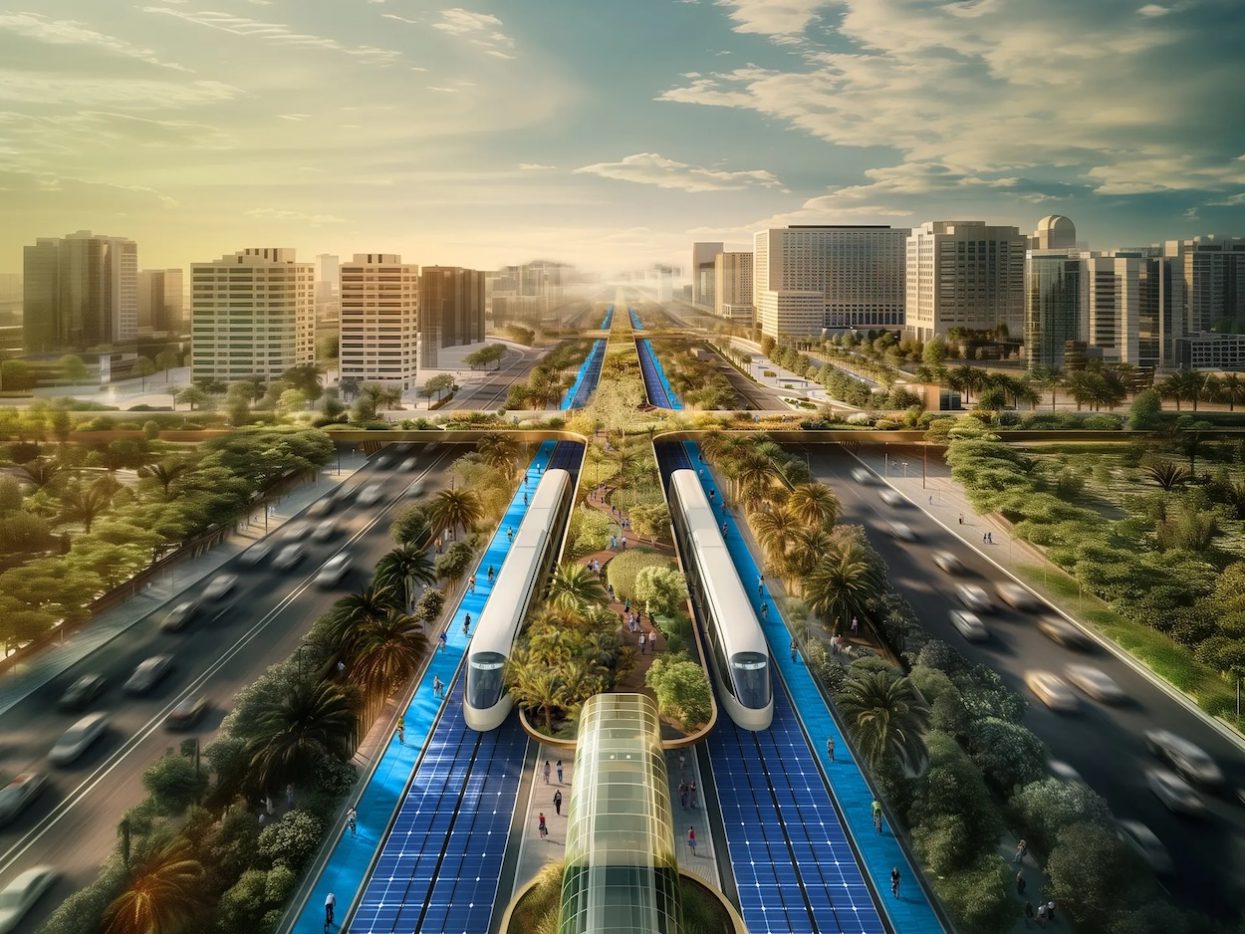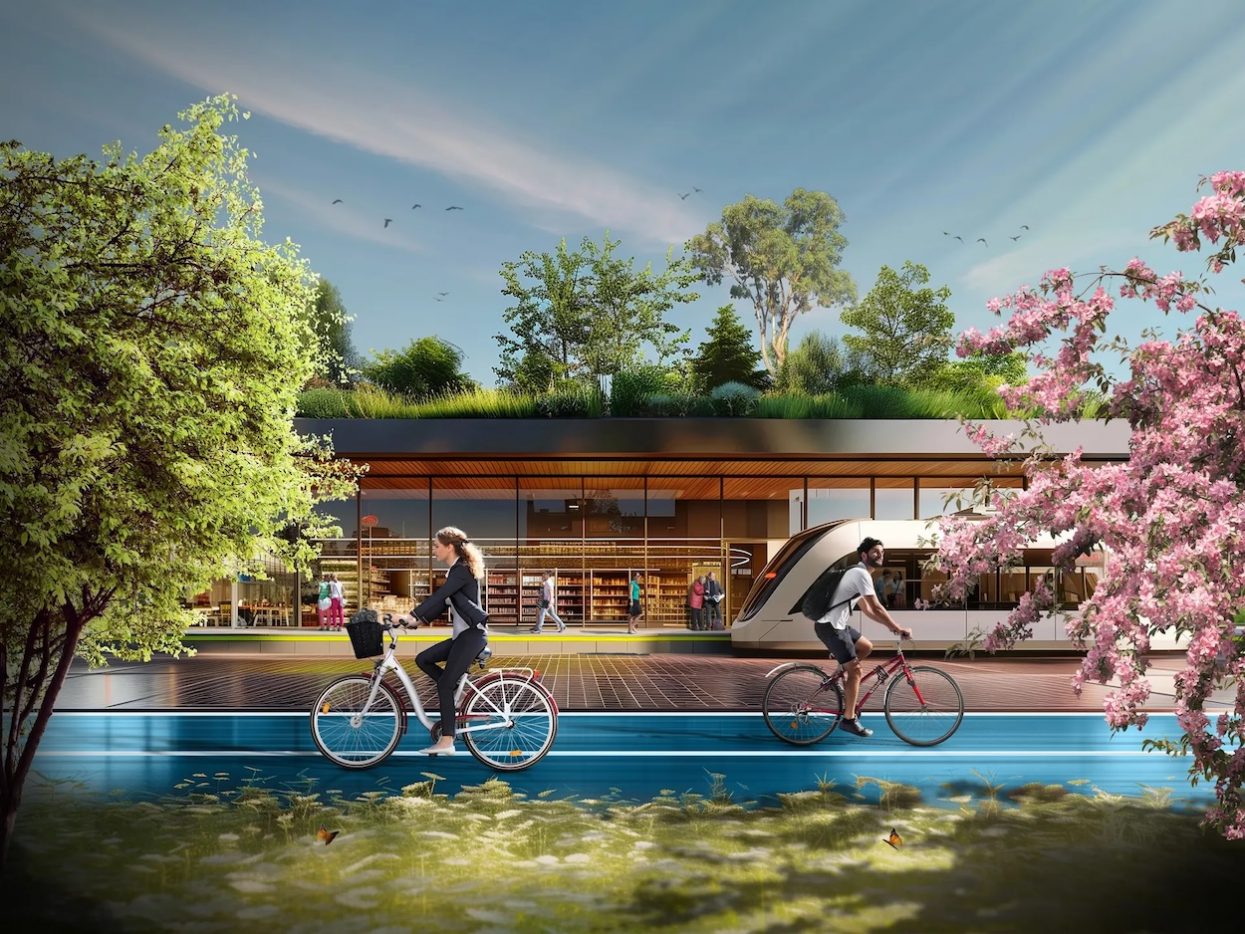Getting fresh air in Dubai is tough—temperatures in the gilded Persian Gulf city rarely dip below 88 degrees Fahrenheit, and are exacerbated by a heat-absorbing cityscape consisting of mostly asphalt and cement that cooks in the sizzling sand. But locals may be more inclined to enjoy the outdoors if the city completes the ambitious Dubai Green Spine, which aims to transform a 40-mile-long stretch of Sheikh Mohammed Bin Zayed Road into elevated and ground-level parkways equipped with a solar-powered tram, one million trees, energy-efficient buildings, and vertical farms. It also makes room for bioswales, or channels to help capture and manage rainwater—an important feature after Dubai’s devastating floods—and implements techniques like xeriscaping to reduce water use.
Described as the “world’s greenest highway” and the “High Line on steroids,” the megaproject forms a crucial part of Dubai’s 2040 Urban Master Plan to drastically reduce its carbon footprint. Because of the city’s reliance on energy-guzzling desalination plants, an intervention is sorely needed. In that regard, the city is in good hands.
The Dubai Green Spine is being spearheaded by Urb, an Emirati firm that bills itself as an “experienced developer of Net Zero Sustainable Cities” whose lush proposals for floating communities and mangrove plantations mark a welcome change from glassy supertalls. There’s also precedent for the park’s success—Madrid transformed one of its busiest arteries into a network of public parks and sports facilities to much fanfare. “The Dubai Green Spine isn’t just about transit; it’s about transforming how cities function, making them more livable and human-centric,” says Baharash Bagherian, CEO of Urb. “This initiative exemplifies how integrated, thoughtful urban planning can drastically improve city life, turning everyday environments into vibrant ecosystems that nurture both people and the planet.”



